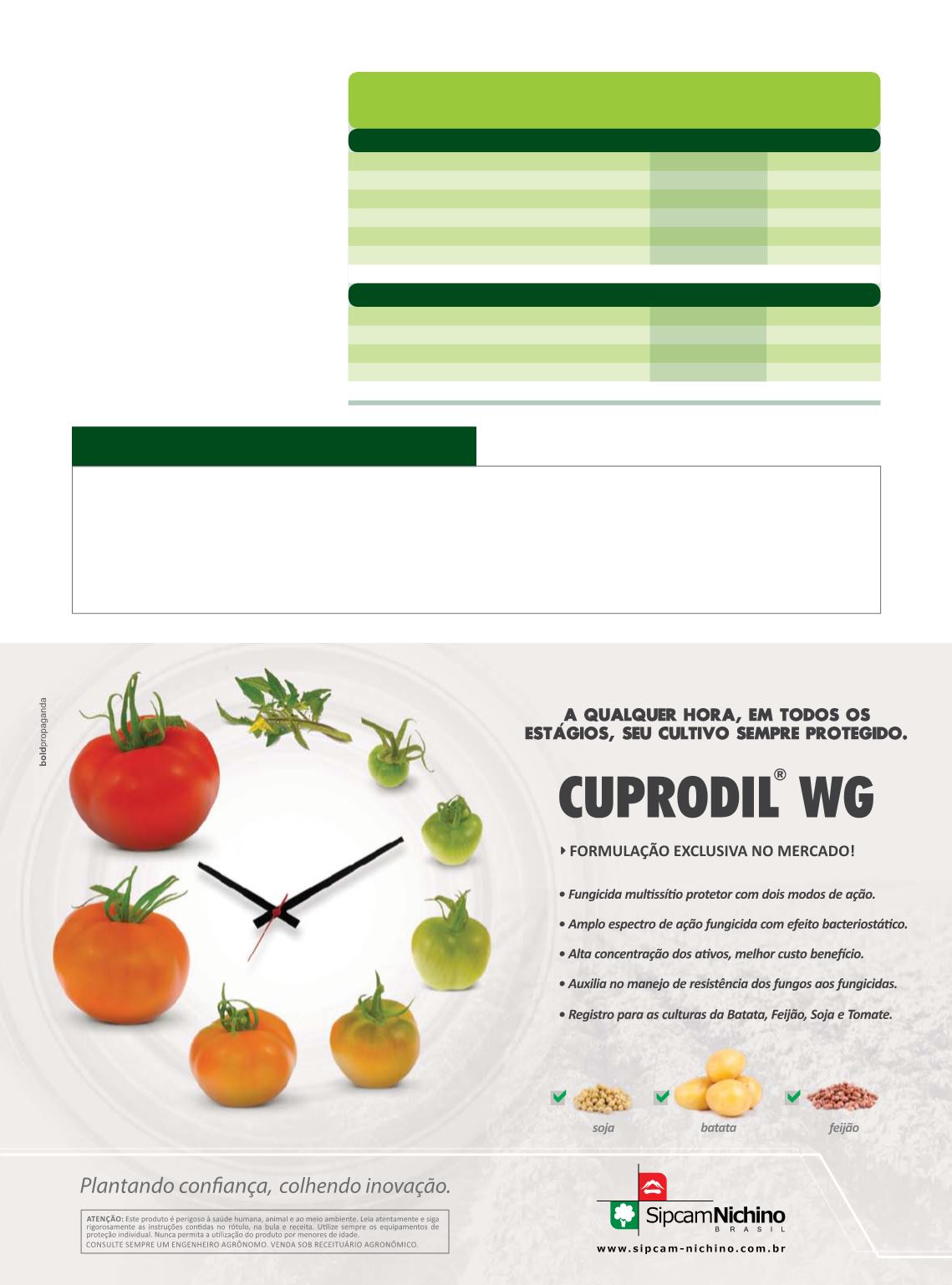
n
n
n
In altitude
Despite a reduction in production, the social and economic importance continues high in the olericulture sector, not to men-
tion its nutritional and health relevance. In the 32 products surveyed by Embrapa researchers , the value of the production in
2015 reached R$ 23.2 billion. Compared to the amount in 2011, it was up 39.6%. If cassava is included, which has evolved 14.6%
over the period, the total amounts to R$ 31.5 billion, just considering the producing area. In terms of jobs, the number varies from
2 to 3.5million direct job positions, andmore than twice asmuch, if cassava is taken into account, and if indirect jobs are factored
in, the total amounts to almost 20 million people in the sector.
tatives of the entity insisted, however, that
profitability will always depend on soaring
consumption and effective bigger produc-
tion per area, if production costs per pro-
duction unit are to be reduced.
Anyway,numbersfromtheBrazilianInsti-
tute of Geography and Statistics (IBGE) in the
firstmonths in2017, onmain vegetables (po-
tato, tomato and onion), looked positive for
the year. The Center for Applied Studies on
Advanced Economics (Cepea), of the Luiz de
Queiroz College of Agriculture (Esalq), a divi-
sion of the University of São Paulo (USP), rat-
ified advances in the main areas of the three
crops and equally carrot crops, highlighting
the industrial focuson the first twocrops.
HORTALIÇAS NO TEMPO
VEGETABLE seasons
32 produtos
Ano
2015 Var. s/ 2014 (%) Var. s/2011 (%)
Área (mil hectares)
752
-2,7
-7,0
Produção (milhões de toneladas)
17,9
-5,3
-7,1
Produtividade (t/ha)
23,7
-1,4
-0,2
Disponibilidade (kg/hab/a)
87,4
-5,6
-13,4
Valor produção (R$ bi)
23,2
8,5
39,6
Fonte:
IBGE-Faostat/Embrapa Hortaliças.
Mandioca
Área (mil hectares)
1.513
-3,5
-13,1
Produção (milhões de toneladas)
23,1
-0,8
-9,3
Produtividade (t/ha)
15,2
2,8
4,3
Valor produção (R$ bi)
8,2
-13,8
14,6
Fonte:
IBGE.


